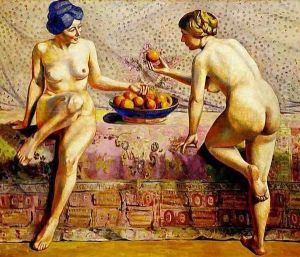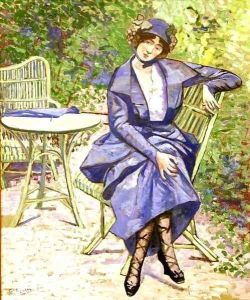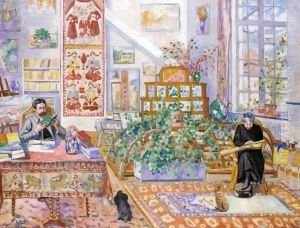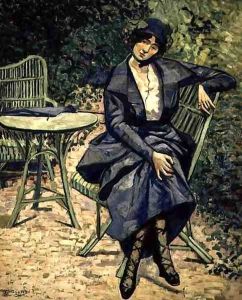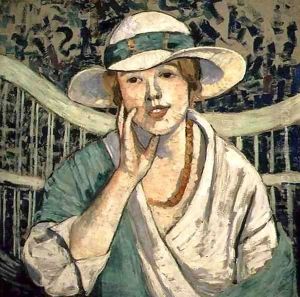Agutte Georgette Paintings
Georgette Agutte was a French painter born on May 17, 1867, in Paris. She was not only known for her work in painting but also for her involvement in the artistic community and her role as a salon hostess. From a young age, she was drawn to art, but her parents initially discouraged her artistic pursuits. Eventually, she found her way to the Académie Colarossi, one of the few art schools in Paris that accepted female students at the time. There she studied under renowned artists such as Gustave Moreau, who also taught prominent painters like Henri Matisse and Georges Rouault.
Agutte's style was influenced by the Post-Impressionist movement, characterized by bold colors and strong forms. She often depicted landscapes, nudes, and still lifes, and her work was marked by a sense of independence and modernity. Georgette Agutte was also associated with the Fauvist movement, though her work remained distinct from the main exponents of Fauvism.
Throughout her career, Agutte exhibited her works at various important venues, including the Salon des Indépendants and the Salon d'Automne. She was married to Marcel Sembat, a socialist politician, and after her marriage, her studio became a meeting place for intellectuals, artists, and politicians. This allowed her to be at the center of cultural and political discussions of her time.
Tragically, Georgette Agutte's life was cut short when she committed suicide following the death of her husband in 1922. Despite her relatively short life and career, Agutte left behind a significant body of work that is recognized for its contribution to early 20th-century French art. Her legacy is preserved through the works held in various French museums, including the Musée d'Orsay and the Musée des Beaux-Arts de Grenoble.
